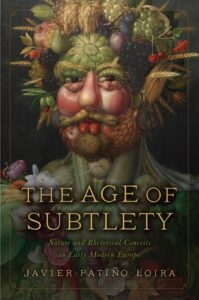
Javier Patiño Loira
Hardback
June 2024 • ISBN 9781644533451 • $130.00
Paperback
June 2024 • ISBN 9781644533444 • $59.95
* E-Book Available
Order Online
Series
The Early Modern Exchange
A craze for intricate metaphors, referred to as conceits, permeated all forms of communication in seventeenth-century Italy and Spain. Conceits reshaped reality in highly creative ways, enabling orators, preachers, and poets to make a display of ingenuity. The Age of Subtlety situates itself at the crossroads of rhetoric, poetics, and the history of science. It analyzes technical writings on conceits by such scholars as Baltasar Gracián, Matteo Peregrini, and Emanuele Tesauro against the background of debates on telescopic and microscopic vision, the generation of living beings, and the boundaries between the natural and the artificial. In an age of subtlety, self-fashioned as a time of unprecedented intellectual sophistication, conceits became the unlikely standard-bearers for the competition between natural and human ingenuity. Rather than being eccentric or unnatural creations, as later periods of history often portrayed them, conceits were the intellect’s attempt at rivaling a fertile and luxuriant nature, self-conscious of its ability to surprise human beings through a variety of forms, skillful at crafting the smallest creatures, and extremely fond of play, trickery, and hiding.
About the Author
Javier Patiño Loira is Assistant Professor of Spanish at UCLA. He is the author of articles and book chapters on early modern Italian and Spanish rhetorical and poetic theory, the formation of libraries, as well as ideas on education and translation.
